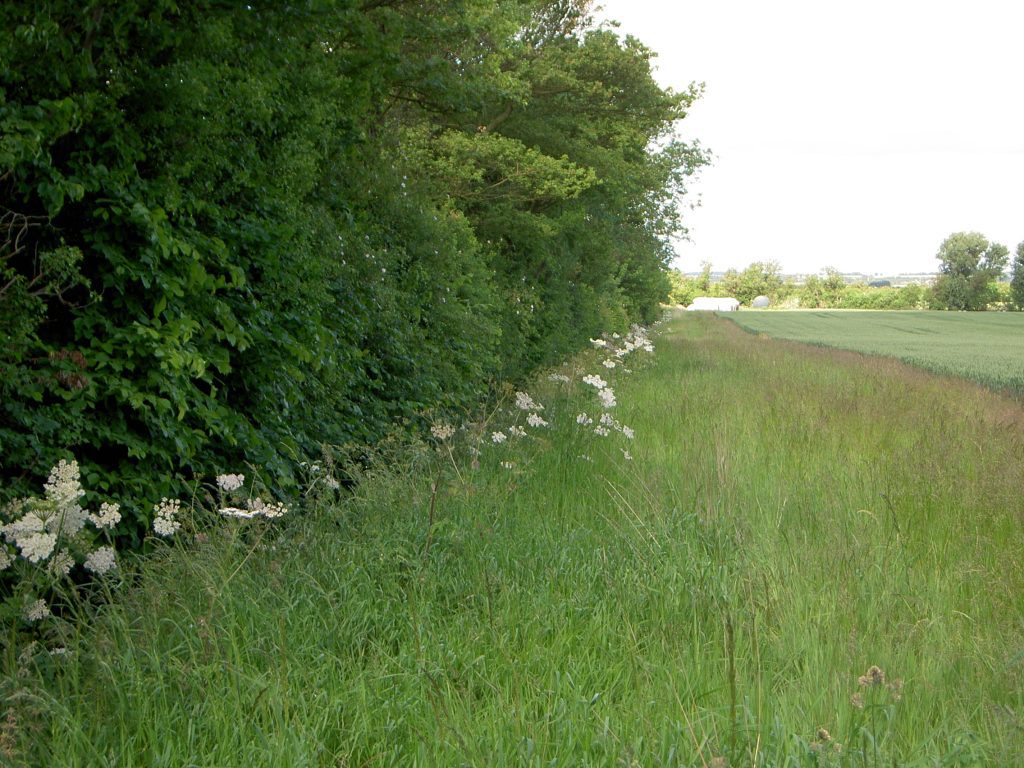
Just a one blog break from the above title. The photo above shows a band of cow parsley growing along a hedge bottom beside the set-aside headland of an arable field. Early to mid May is the time when cow parsley suddenly seems to grow upwards a few inches overnight and come into flower with lots of tiny white flowers forming umbellifers at the tops of the stems. It is the time of a profusion of white blossom all flowering at once – hawthorn bushes often a mass of tiny white flowers standing-out from the bright green leaves which developed last month, white dead-nettle showing its bugle-like white flowers beloved of bees, maybe some early hogweed coming into flower with umbellifer flowering heads more robust than those of cow parsley and maybe some white bluebells able still to hold their own in the dense undergrowth.
The lower growing spring flowers have had to give way to the more vigorous growing plants, hidden from view for another year.
This is the most colourful time in the English landscape, far more so than in the summer months when most of the flowering wild plants have run-to-seed or, tragically, been mown down since first of June, the date when ‘legal’ mowing can begin. This is the time to be out and about in one’s own bit of the countryside so as not to miss the display.
Local to myself these days is Oak Road, a pedestrian way with wide tree-lined verges where a local group of activists have put up ‘do not mow’ signs in agreement with the City Council. There is no need for this area to be mown anyway as there is no traffic. If nearby allotment holders claim it is a source of wind-blown weed seeds, as farmers do also, they ignore the fact that the air is full of such seeds anyway from other sources. Oak Road follows the route of an ancient track that led from Cottingham parish to the North Gate in Hull’s medieval town walls. In more recent times the Cottingham and Skidby Drain was dug alongside it, this now filled in.